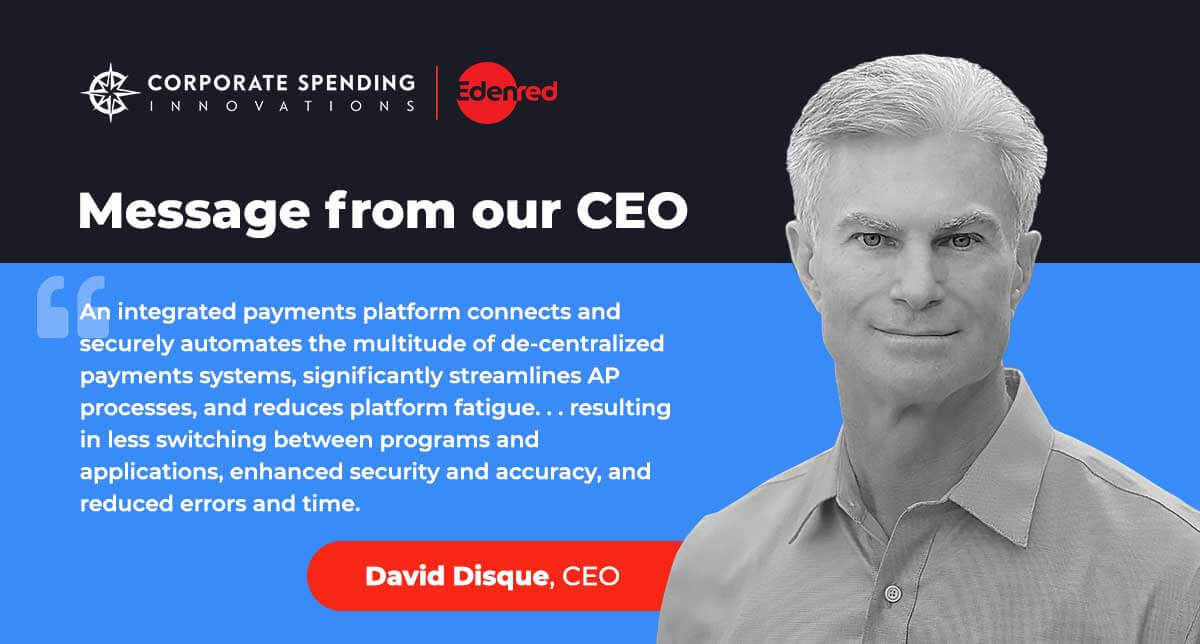The need for business efficiency is at an all-time high. Implementing business apps and platforms in every field is meant to improve performance. However, getting them to work together is often a challenge. Integrated automation is the answer.
Integrated automation unifies disparate systems so that workflow is not interrupted and doesn’t need constant human intervention. The more complicated the industry, the more integration is required due to the number of platforms that are typically used. Accounts payable is a perfect example.
When companies decide to automate their payment process, there’s the issue of compatibility with legacy systems. Updating requires a connection between established or current systems, several new applications, payment rails, and banks. A typical work process already involves the constant movement between these apps, systems, and platforms, each with its own log-in.
The Anatomy of Work Index study by Asana in 2021 states that employees in the U.S. switch between an average of 13 apps throughout the course of a workday. And they switch as often as 30 times a day.
The increasing number of apps and platforms for every job function eventually leads to platform fatigue. Platform fatigue is constantly moving between platforms to accomplish a task, such as payments. Having to transfer information from one platform to another creates additional steps. And it actually reduces the attention span of employees. In addition, when the various platforms don’t work with each other, it causes more complications and added time and effort.
Jason Kolbenheyer, CSI’s Chief Product Officer, explains the need for integration within accounts payable. “Put simply, deeply integrated automation alleviates platform fatigue. FinTech was born to address the delta between what customers wanted and what Banks were able to offer. In the early days, FinTech solutions drove these customers to new platforms, which created new work. A truly embedded solution solves for that by embedding the services and functionality customers want and need, where they want and need it.”
It’s not enough to automate your payment process. The platform should be able to integrate with your current accounting systems and ERPs. APIs and cloud-based payment automation help to unify what would typically be fragmented systems and processes. This integration allows for better visibility and control of payments than tedious manual processes. Better visibility means improved cash flow.
Large and small organizations have ingrained processes for handling their accounts payable. And if they’re comfortable with those processes, chances are they will not be eager to change them. However, no matter how skilled the accounts payable team has become over the years with excel sheets and printing checks, manual processes are a hindrance to speed, accuracy, and growth.
Human error is inevitable when combing through long spreadsheets and trying to match payments to invoices by hand. And there is considerable time spent getting payments approved and signed. When paper checks are mailed, they are at high risk for fraud. Mail-related check fraud has been a consistent problem for the USPS and businesses for several years.
As a company grows, the number of clients and complexity of payment processing increases. The time and effort needed to keep up with multiple payment methods for numerous clients eventually take its toll on the AP team. It’s not long before this inefficiency leads to burnout and less productivity.
An integrated payments platform that connects and securely automates the multitude of de-centralized payments systems such as check, ACH, card, wire, and others, significantly streamlines AP processes and reduces platform fatigue. These integrated platforms result in less switching between programs and applications, enhanced security and accuracy, and reduced errors and time. Eliminating manual processes optimizes cost reduction and allows AP staff to focus on higher-value business needs.
Manual payment methods alone are cumbersome. But manually handling reconciliation tasks adds another layer to the inefficiencies. Having to review and match payment transactions with bank statements for every supplier is a tedious process. It often results in errors and is time-consuming. Finding missing supplier contact or banking information is another lengthy process when done manually.
Effective payment auditing can be accomplished in less time with an integrated AP system. Your suppliers’ financial information along with your bank statements are stored on one system and can be easily accessed for reconciliation.
Accuracy is significantly increased with an integrated automated payment platform. When the separate systems are connected, there’s no need to move back and forth between applications. Detailed payment data is easier to access on one system, simplifying reconciliation. It is an overall smoother process and frees up a significant amount of time for the AP team.
CSI’s Paysystems platform digitizes all payments with an API or SFTP single-file upload. Our market-leading integrated payment solutions fully integrate with banks and virtually all ERPs to automate and optimize your payment process. CSI’s integrations remove the need to interact with several platforms and provide secure and simplified payments and reconciliation.
There are many ways an integrated automated payment system can benefit a company. But all of the reasons combined ultimately affect workflow efficiency. A system that is inefficient and can’t be upgraded is not scalable. An integrated automated payment platform like CSI’s Paysystems is the solution.



